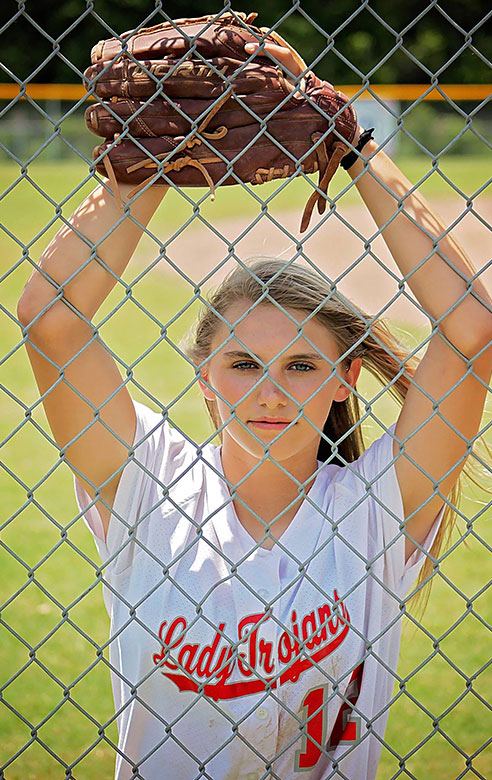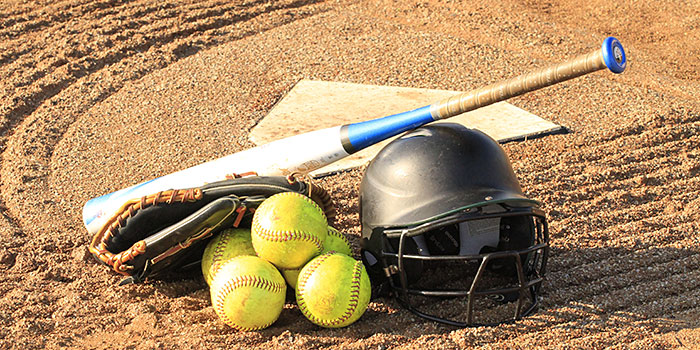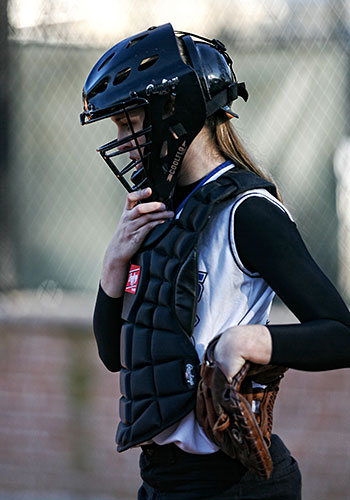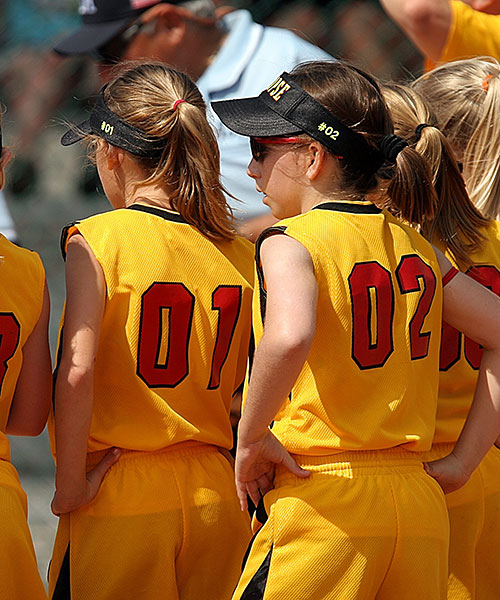 2021-10-07
2021-10-07




History Of Softball
- ArticlesandContent.com (CIRCA 2005)
- /
- Oct 8, 2021 (written 2005)
While awaiting regular game updates from telegrams being sent from the Polo Grounds located in New York, one of the Yale alumni was joking around and tossed a boxing glove at one of the Harvard alumni. The Harvard graduate used a broom handle to deflect that tossed glove, and then a playful game of indoor baseball gaming followed.
The history of softball and the history of baseball are, of course, intricately interwoven. Some historians believe that softball was created after baseball and is the sibling, albeit the younger, of the two sports. Interestingly, the games of football, boxing or pugilism, and boating games all had an influence on softball history. A review of the game’s history shows the subtle and not so subtle influences that different sports had on the game of softball and its development.
Softball: Its Beginnings
Softball was created and influenced by a football game, the glove used in boxing matches, and a club created for boating. A member of Yale and Harvard alumni, George Hancock, had gathered with other alumni members at a Chicago based boat club on Thanksgiving in the late 1870s. The club was called the Farragut Boat Club and the precise year was 1887. Group members had gone to the boat club to observe a Yale versus Harvard football game.
While awaiting regular game updates from telegrams being sent from the Polo Grounds located in New York, one of the Yale alumni was joking around and tossed a boxing glove at one of the Harvard alumni. The Harvard graduate used a broom handle to deflect that tossed glove, and then a playful game of indoor baseball gaming followed. Hancock bound up the boxing glove by tying it up with its laces: this made the ball shaped more like a ball used in baseball. The group of men ended up playing the game for a good hour and decided that it was a game that many would enjoy. Hancock later documented the game regulations and had large softballs and bats with rubber tips created so the game could be played safely indoors.
Since winters were harsh in the Chicago region, the popularity of “indoor softball” was certain. The game served as a way for baseball fans to get some practice during the harsher cold months. By the year 1889, an “indoor baseball” league was created. During the summertime, the game was also played outdoors. Later, Lewis Rober, a Minneapolis firefighter, help shaped some of the game’s regulations by insisting on seven innings; the game was played by the firefighters between fire calls and as many as 3000 spectators would observe. In the year 1913, the game of softball was played on playgrounds and in parks after being officially adopted by the Minneapolis Park Board.

Softball: Its Evolution
The game of softball was not really referred to as softball until the year 1926. The latter moniker was created by members of the YMCA in Denver. In 1933, the first tournaments were organized and were conjoined with events at the World’s Fair: this was an effort put forth by Michael Pauley, a salesman, and Leo Fischer, a reporter. The two men invited as many as fifty-five softball teams to play in three different softball divisions including a women’s slow-pitch division, a men’s slow pitch division, and a men’s fast pitch division. The games that were organized were observed by over 350000 people. These first games helped to spread the softball game quickly; within seven years time there were roughly five million people that had played or that were participating in softball games.
In 1933, the Amateur Softball Association was established. The latter organization helped to further regulate the sport; this particular agency is responsible for devising special rules pertaining to various age groupings. The standard sized softball for game use is now a twelve-inch ball for adult gaming. When it comes to youth games, the ball is eleven inches in size. Meanwhile, some leagues choose to play with a ball that is sixteen inches wide. The ball size in softball is further decided based upon whether or not the gaming involves slow-pitch or fast pitch plays. The field size will also be determined by the age of the participants.
While softball first started out in places like Chicago or Milwaukee, as the game became more popular it spread to the upper Midwest area and to Canada too. The first softball league created outside the boundaries of the US was created in Canada in the region of Toronto in the late 1890s. As the game spread, it was identified under a number of monikers including pumpkin ball, mush ball, and cabbage ball. The ball and bat sizes would vary depending upon who was playing and where the game was played. In the early 1930s, a group of men traveled around the nation playing the softball game: they identified their group as the Kids and Kubs. All of the men in the latter group were no younger then seventy-five and they participated in softball games fully dressed in business suits and ties. Following the conclusion of the second World War, Canadian soldiers brought the game to regions in the Netherlands. By the late 1930s, this game was even being played in parts of Australia.
Since the early 1950s, the game of softball has been regulated by the International Softball Federation. By the mid 1960s, women played the first fast pitch international championship games hosted in Australia in the city of Melbourne. In 1966, the first men’s international competition was hosted in Mexico City. Since the year 1970, like the Olympics, international softball tournaments are played on an every four-year basis.
In the early 1980s, championships for women’s softball teams were hosted by the National Collegiate Athletic Association and the tournaments were identified as the Softball World Series. In the late 1990s, the game of fast pitch softball for women was an introduced to Olympic gaming. It was not until the early 1960s that the game became popular in the United Kingdom and about twenty years later the first softball league for women was formed. By the late 1970s the American Professional Slow Pitch League was also formed; this was one of as many as three professional softball leagues established between 1977 and 1982.
A Few Famous Softball Players
There are several famous softball players that made major contributions to the teams and leagues that they participated in; some of the most famous players in the game of softball include people like Michele Smith, Dot Richardson, and Jennie Finch, among others. These players made many records and accomplishments during their exciting softball careers. Today, they serve as role models for other players and hold a special place in the hearts of all softball fans.
Michele Smith
Michele Smith is a native of New Jersey where she went to the Voorhees High School. She played softball during her high school years and she maintained records for no hitters, strikeouts, and wins. She eventually attended Oklahoma State University. Smith is an amazing athlete that has overcome a number of tragedies in her life. In the late 1980s, she was in an automobile accident with her father. She was thrown from the vehicle and she was severely injured; she had a piece of her bone on her elbow chopped off, and a torn tricep muscle in the arm that she pitches with. After enduring nine months of extensive rehabilitation, she made a hard and fast comeback to the softball game as a pitcher while she attended Oklahoma State University. In fact, she was a better pitcher than ever before and increased her pitching speed by as much as three miles per hour.
Smith was a professional player on softball teams since the early 1990s, and played in the Japanese Professional Softball League. Smith is a softball gold medal winner in the Olympics, not once, but twice, and she was a member of the US team in the 1996 and 2000 Olympics. Six years later, she was inducted into the Hall of Fame for softball players. She won the Pro League Champion and MVP competitions seven times while playing for Japan. She is currently identified as a Softball Ambassador and will help to bring the game back to the 2016 Olympics. Smith has played a variety of positions in her career including a right fielder, pitcher, and first base. She bats left-handed and pitches with her left hand too. She also plays field hockey and basketball. She has earned the nicknames Lioness, Mikey, Lefty, Silky, and Smitty.
Dot Richardson
Dot Richardson, also sometimes called Dorothy, is a native of Orlando, Florida. This famous softball player is a former international player as well as a doctor. Richard went to college at the Western Illinois University where she was in attendance for one year. She later attended the University of California in Los Angeles for a period of four years. She eventually earned a Master’s Degrees at Adelphi University and she was also a graduate assistant for softball at the same university. She followed her time at Adelphi at the University of Louisville School of Medicine and got her degree in the early 1990s. She followed her degree in medicine with a five-year long residency at the University of Southern California.
Richardson was in the Olympic Games in 1996 and she, along with her other softball playing teammates helped to win the first gold Medal in Softball at the event. She followed her gold medal win with an fellowship in Los Angeles at the Kerlan Job Orthopaedic Sports Medicine Clinic. During her time in college she was honored with the NCAA Player of the Decade title. In 1990, she was given the Nuprin Comeback of the Year Award. In 1996, she was inducted into the UCLA Hall of Fame. In 1997 she was award the Babe Zahrias Award, and 1998 she was awarded the Sports Legend Award. She is also inducted into the National Softball hall of Fame. She won the All America honor a total of fifteen times and she was a member of a championship team ten times during her softball career.
Jennie Finch
Jennie Finch participated as a team member on the 2088 Silver Beijing team and the 2004 Gold Athens team in the Olympic games. She is a native of California and sometimes she uses the last name of Daigle after her husband. Finch started playing the game of softball when she was just 5 years old and she started softball pitching three years later. While still very young, she assisted teams at the University of California; she was a bat girl for softball teams. During her high school years, she lettered twice for basketball, twice for volleyball and four times for the game of softball. During her sophomore year in high school, she was a choice in the All Suburban League and the All California Interscholastic Fed. Division.
Finch attended the University of Arizona where she served as a softball pitcher for the collegiate team. There she earned the title of All American Pitcher & First Basement three times and the Honda Sports Award twice. In the early 2000s, Finch won her fifty first consecutive softball game and set a record doing so. Eventually, she wound up with sixty consecutive wins in all. Finch has proven to have impressive control over the ball when she pitches, whether she is throwing a drop ball, a screwball, a curveball, or a riser. When she pitches, she has been clocked at 70 miles per hour.
She played and won in the Women’s College World Series; was honored with the title of the Most Outstanding Player, and her number 27 was later retired by the university in 2003. Finch was at one time a pitcher on a national softball team in the USA and she is a former team member of the Chicago Bandits. She was a major contributor to helping the USA softball team take home the win in the Olympics in 2004. Time Magazine has dubbed finch as the most famous softball player of all time. She retired from her softball career in 2010 so she could spend more time with her loved ones.
